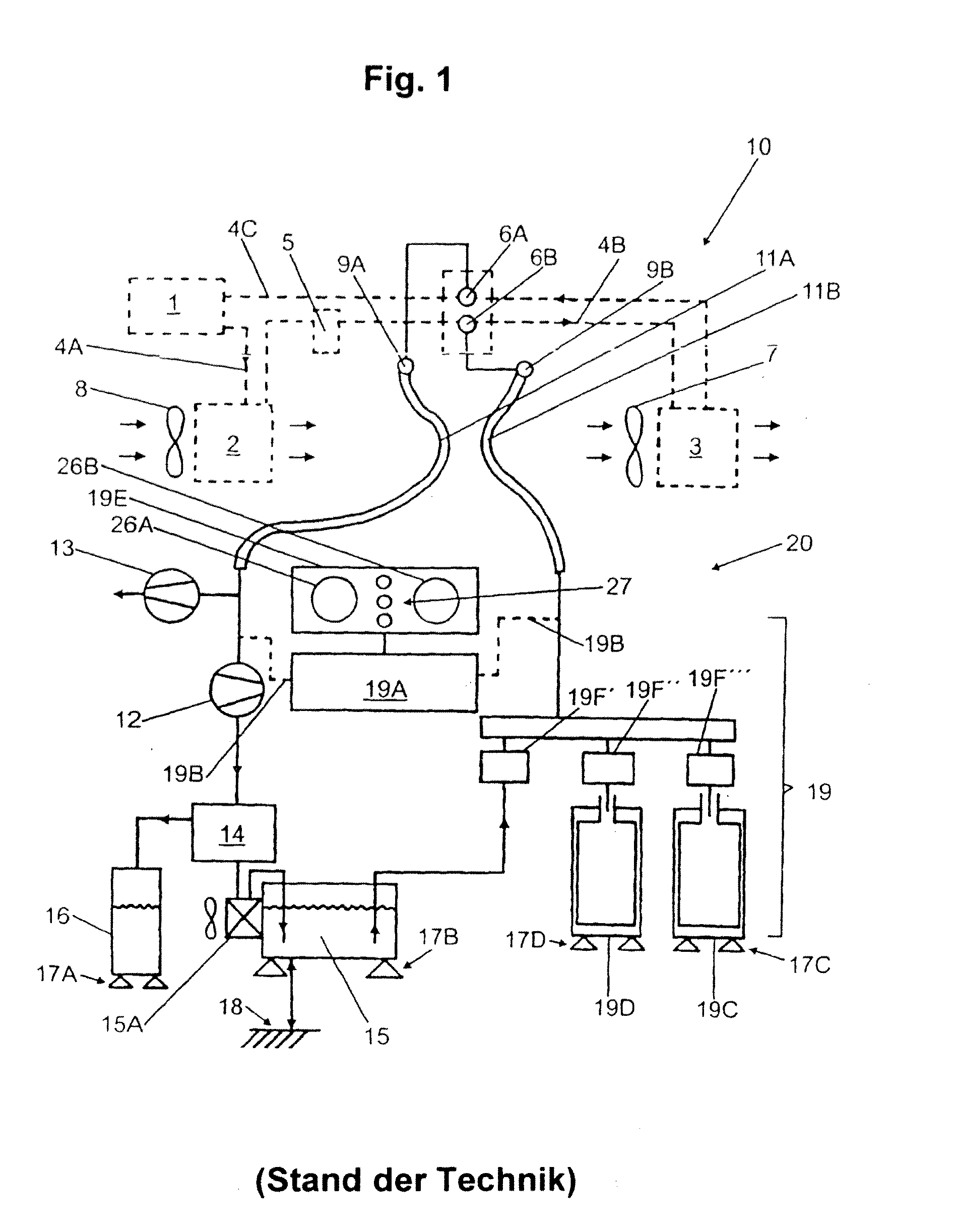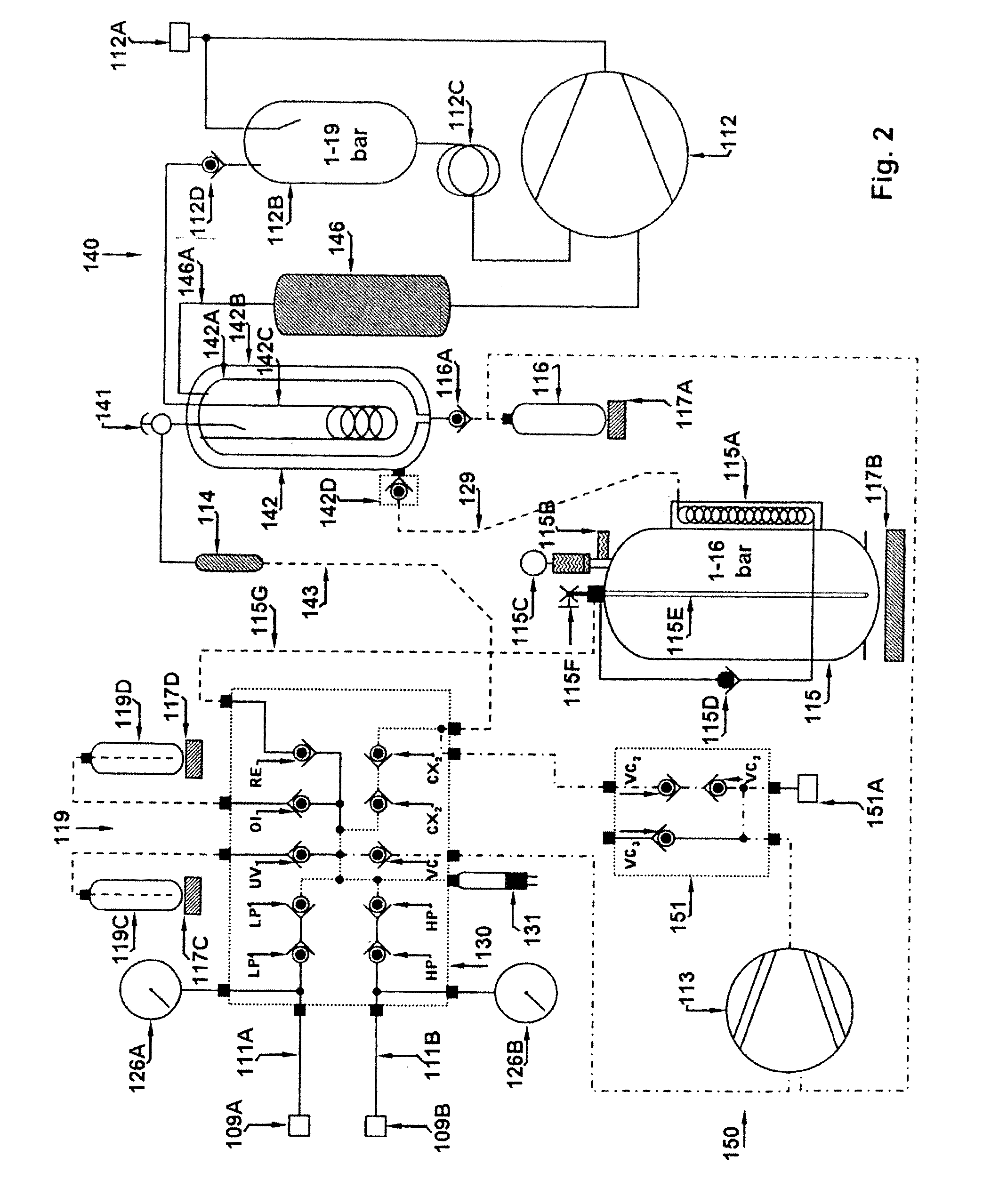Method for maintaining a vehicle air conditioning unit and service apparatus therefor
a vehicle air conditioner and air conditioning unit technology, applied in the direction of refrigeration machines, vehicle heating/cooling devices, refrigeration components, etc., can solve the problems of laborious and laborious search for leaks, and achieve the effect of reducing costs and improving the possibility of diagnosing
- Summary
- Abstract
- Description
- Claims
- Application Information
AI Technical Summary
Benefits of technology
Problems solved by technology
Method used
Image
Examples
Embodiment Construction
[0022]The block circuit diagram shows the basic design of a servicing device for vehicle air-conditioning systems. Accordingly, servicing connectors 109A, 109B for connection to the refrigerant / compression circuit of a vehicle air-conditioning system (not illustrated here) are provided in order to service the latter, in particular to empty and refill it. There is a fluidic connection via pressure hoses 111A, 111B to a first switchover valve block 130 whose function is explained further below. The switchover valve block 130 is fluidically connected, on the one hand, to a separator stage 140 which is illustrated on the right in the image and will be explained further below, and on the other hand (bottom left in the diagram) to a vacuum unit 150, which will also be explained further below. A low-pressure manometer 126A and a high-pressure manometer 126B on the switchover valve block 130 serve, inter alia, for checking the state and function of the coolant compressor oil circuit of the ...
PUM
 Login to View More
Login to View More Abstract
Description
Claims
Application Information
 Login to View More
Login to View More - R&D
- Intellectual Property
- Life Sciences
- Materials
- Tech Scout
- Unparalleled Data Quality
- Higher Quality Content
- 60% Fewer Hallucinations
Browse by: Latest US Patents, China's latest patents, Technical Efficacy Thesaurus, Application Domain, Technology Topic, Popular Technical Reports.
© 2025 PatSnap. All rights reserved.Legal|Privacy policy|Modern Slavery Act Transparency Statement|Sitemap|About US| Contact US: help@patsnap.com


